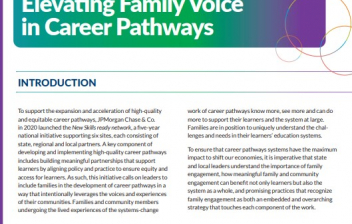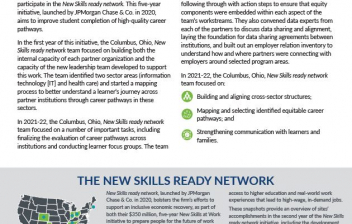Step 1: Develop the Message
-
A simple way to organize the core message is around a triangle, with the desired action in the center and the best three supporting messages at each point. Advance CTE’s Core Messages for Attracting Learners to CTE resource provides a description of the message triangle — or core motivators — that should be at the center of any communications effort.
-
Keep in mind that you can use the message triangle to prepare to reach out to a member of Congress and ask him/her to take a desired action. For example, you may want a member of Congress to vote in favor of a bill or sign on to a letter. Follow our Legislative Updates to stay informed about opportunities to connect with your members.
Step 2: Know Your Audience
-
Messages can be most effective when directed and tailored to your members of Congress. For example, supporting messages should provide information that would be relevant to the member’s state or district.
-
Consider visiting the websites of your members of Congress to learn about their education policy priorities before reaching out about a specific bill or letter.
Step 3: Tailor Your Message to Your Audience
-
Based on what you learned in Step 2, determine which of the supporting messages you developed will have the largest impact on your members of Congress.
-
Check out what’s going on with CTE in your state to find additional information that may support your message.
Step 4: Develop an Engagement Plan
-
Now, you can put together a stakeholder outreach plan, which includes finalizing communication channels (emails, phone calls or in-person meetings) and developing effective materials. For example, your outreach may include contacting a member of Congress.
-
Find contact information for your members of Congress, and share your message through email or direct mail. You can also call the Capitol Switchboard at 202-224-3121 and ask to be connected to your members’ offices.
-
-
Check out Advance CTE’s tool to help state leaders begin to build a communications and recruitment strategy.
Step 5: Measure for Success
-
It is imperative that you have ongoing outreach and communications strategies in place to make progress toward achieving your desired action. Keep in mind that an audience must hear a message an average of 11 times before it resonates.
-
A critical component for helping policymakers and stakeholders understand the value of CTE is lifting up high-quality programs of study that prepare learners for college and career success. For the past five years, Advance CTE has held the Excellence in Action awards, recognizing innovative and effective programs across the 16 Career Clusters® hailing from communities around the nation. Learn more about these programs.
-
Share your CTE advocacy stories of success and challenges with Advance CTE!



